Astrocyte regional heterogeneity revealed through machine learning-based glial neuroanatomical assays
- PMID: 33410136
- PMCID: PMC8113076
- DOI: 10.1002/cne.25105
Astrocyte regional heterogeneity revealed through machine learning-based glial neuroanatomical assays
Abstract
Evaluation of reactive astrogliosis by neuroanatomical assays represents a common experimental outcome for neuroanatomists. The literature demonstrates several conflicting results as to the accuracy of such measures. We posited that the diverging results within the neuroanatomy literature were due to suboptimal analytical workflows in addition to astrocyte regional heterogeneity. We therefore generated an automated segmentation workflow to extract features of glial fibrillary acidic protein (GFAP) and aldehyde dehydrogenase family 1, member L1 (ALDH1L1) labeled astrocytes with and without neuroinflammation. We achieved this by capturing multiplexed immunofluorescent confocal images of mouse brains treated with either vehicle or lipopolysaccharide (LPS) followed by implementation of our workflows. Using classical image analysis techniques focused on pixel intensity only, we were unable to identify differences between vehicle-treated and LPS-treated animals. However, when utilizing machine learning-based algorithms, we were able to (1) accurately predict which objects were derived from GFAP or ALDH1L1-stained images indicating that GFAP and ALDH1L1 highlight distinct morphological aspects of astrocytes, (2) we could predict which neuroanatomical region the segmented GFAP or ALDH1L1 object had been derived from, indicating that morphological features of astrocytes change as a function of neuroanatomical location. (3) We discovered a statistically significant, albeit not highly accurate, prediction of which objects had come from LPS versus vehicle-treated animals, indicating that although features exist capable of distinguishing LPS-treated versus vehicle-treated GFAP and ALDH1L1-segmented objects, that significant overlap between morphologies exists. We further determined that for most classification scenarios, nonlinear models were required for improved treatment class designations. We propose that unbiased automated image analysis techniques coupled with well-validated machine learning tools represent highly useful models capable of providing insights into neuroanatomical assays.
Keywords: astrocyte; clustering analysis; gliosis; machine learning; neuroanatomy; neuroinflammation.
© 2021 Wiley Periodicals LLC.
Figures

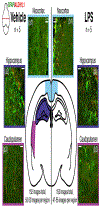

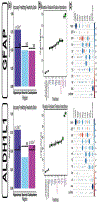
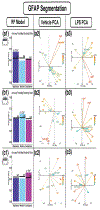

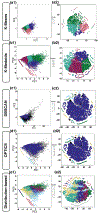
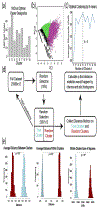

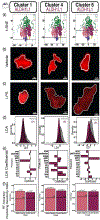
Similar articles
-
Astrocyte-Derived Estrogen Regulates Reactive Astrogliosis and is Neuroprotective following Ischemic Brain Injury.J Neurosci. 2020 Dec 9;40(50):9751-9771. doi: 10.1523/JNEUROSCI.0888-20.2020. Epub 2020 Nov 6. J Neurosci. 2020. PMID: 33158962 Free PMC article.
-
Utilizing supervised machine learning to identify microglia and astrocytes in situ: implications for large-scale image analysis and quantification.J Neurosci Methods. 2019 Dec 1;328:108424. doi: 10.1016/j.jneumeth.2019.108424. Epub 2019 Sep 5. J Neurosci Methods. 2019. PMID: 31494186
-
Astrocyte-specific transcriptome analysis using the ALDH1L1 bacTRAP mouse reveals novel biomarkers of astrogliosis in response to neurotoxicity.J Neurochem. 2019 Aug;150(4):420-440. doi: 10.1111/jnc.14800. Epub 2019 Jul 11. J Neurochem. 2019. PMID: 31222732 Free PMC article.
-
Quantitative aspects of drug and toxicant-induced astrogliosis.Neurochem Int. 1995 Feb;26(2):115-24. doi: 10.1016/0197-0186(94)00106-5. Neurochem Int. 1995. PMID: 7599532 Review.
-
Machine learning and computer vision approaches for phenotypic profiling.J Cell Biol. 2017 Jan 2;216(1):65-71. doi: 10.1083/jcb.201610026. Epub 2016 Dec 9. J Cell Biol. 2017. PMID: 27940887 Free PMC article. Review.
Cited by
-
Supervised and unsupervised learning reveal heroin-induced impairments in astrocyte structural plasticity.Sci Adv. 2025 May 2;11(18):eads6841. doi: 10.1126/sciadv.ads6841. Epub 2025 Apr 30. Sci Adv. 2025. PMID: 40305596 Free PMC article.
-
Microglia are implicated in the development of paclitaxel chemotherapy-associated cognitive impairment in female mice.Brain Behav Immun. 2023 Feb;108:221-232. doi: 10.1016/j.bbi.2022.12.004. Epub 2022 Dec 6. Brain Behav Immun. 2023. PMID: 36494047 Free PMC article.
-
Advances in quantitative analysis of astrocytes using machine learning.Neural Regen Res. 2023 Feb;18(2):313-314. doi: 10.4103/1673-5374.346474. Neural Regen Res. 2023. PMID: 35900411 Free PMC article. No abstract available.
References
-
- Bergmeir C, & Benítez J (2012). Neural Networks in R Using the Stuttgart Neural Network Simulator: RSNNS. In (Vol. 46(7), pp. 1–26). Journal of Statistical Software. - PubMed
-
- Cahoy JD, Emery B, Kaushal A, Foo LC, Zamanian JL, Christopherson KS, … Barres BA (2008). A transcriptome database for astrocytes, neurons, and oligodendrocytes: a new resource for understanding brain development and function. J Neurosci, 28(1), 264–278. doi:10.1523/JNEUROSCI.4178-07.2008 - DOI - PMC - PubMed
Publication types
MeSH terms
Grants and funding
LinkOut - more resources
Full Text Sources
Other Literature Sources
Miscellaneous

